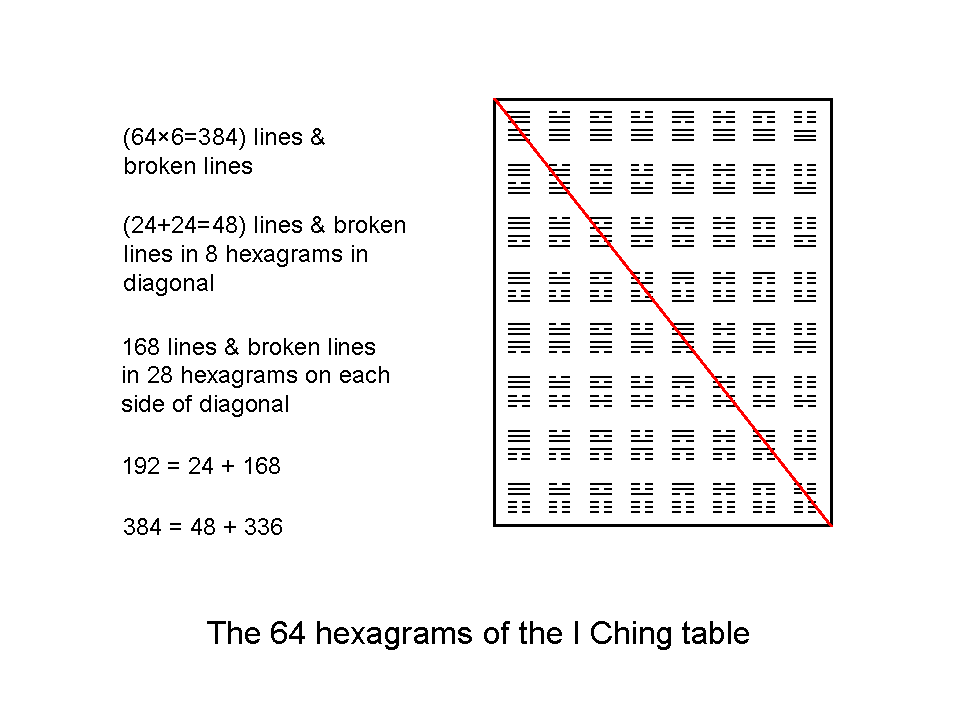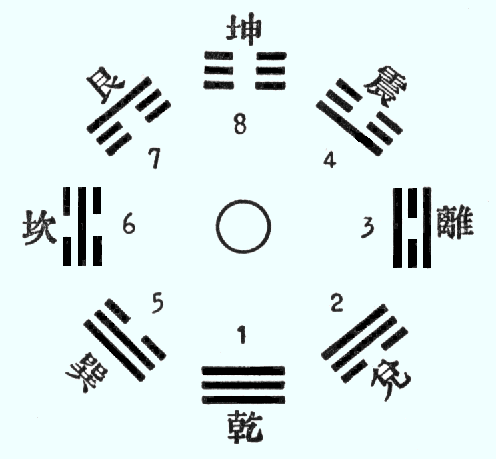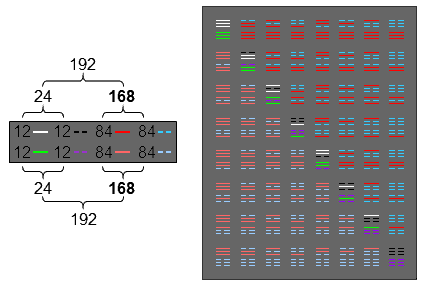
| << Previous 1 [2] Next >> |

The 64 hexagrams consist of 384 lines & broken lines. To every one of the 192 unbroken lines expressing Yang, there corresponds its polar opposite, unbroken line expressing Yin. For convenience of expression, they will be referred to as Yang and Yin lines.
The red line passes through the eight hexagrams in the diagonal of the 8×8 array. Their 48 Yang & Yin lines comprise 24 Yang lines and 24 Yin lines. The eight trigrams in the upper halves of these hexagrams comprise 12 Yang lines and 12 Yin lines. As each diagonal hexagram consists of two similar trigrams, the eight trigrams in the lower halves of the diagonal hexagrams also comprise 12 Yang lines and 12 Yin lines.
The 28 hexagrams on each side of the diagonal line of eight hexagrams contain 168 Yang/Yin lines (84 Yang, 84 Yin). Hence, there are 168 off-diagonal Yang lines and 168 off-diagonal Yin lines, that is, 336 Yang/Yin lines. The number 168 is the number value of Cholem Yesodoth, the Mundane Chakra of Malkuth (see here). This is the second sign that the table of hexagrams has a connection with the Kabbalistic representation of the divine paradigm — the Tao, the first being the fact that the number 64 itself is the number value of Nogah, the Mundane Chakra of another Sephirah — Netzach, whilst the third sign is that the number 48 (the number of Yang/Yin lines in the eight diagonal hexagrams) is the number value of Kokab, the Mundane Chakra of a third Sephirah — Hod.
The array of 64 hexagrams displays two patterns that prove to be common to all sacred geometrical representations of holistic systems:
1. 384 = 192 + 192. This expresses the Yang/Yin polarity of the two halves of a holistic system because the 64 hexagrams are composed of 192 Yang lines and 192 Yin lines. Alternatively, it may be thought as expressing the two diagonal halves of the 8×8 array of hexagrams because each half has 192 lines & broken lines (96 lines & 96 broken lines);
2. 192 = 24 + 168. This expresses the 24 non-formative and 168 formative degrees of freedom needed to express each half of a holistic system. It manifests as the 24 lines & broken lines in the set of eight different trigrams in the upper or lower halves of the eight diagonal hexagrams and the 168 lines & broken lines in the 56 off-diagonal trigrams in each half that constitute seven copies of this basic set of trigrams.
The third pattern found in these systems:
384 = 48 + 336,
where
48 = 24 + 24
and
336 = 168 + 168
is a corollary of the first two patterns. Just as there are 12 Yang lines and 12 Yin lines in the eight diagonal trigrams:
 (The numbers indicate the order of generation of the trigrams)
(The numbers indicate the order of generation of the trigrams)
so, too, the number 24 as a parameter of holistic systems divides into two sets of 12 degrees of freedom that are opposite, complementary or "dual," in some sense (in the case of the three tossed coins, there are 12 heads and 12 tails in the eight possible outcomes). The division:
168 = 84 + 84
of the holistic parameter 168 is also characteristic of such systems (see here). It manifests in the 168 off-diagonal lines & broken lines in each half of the 8×8 array of hexagrams as the 84 lines expressing Yang and the 84 broken lines expressing Yin:

It implies that
336 = 168 + 168 = 84 + 84 + 84 + 84.
This division is discussed for various sacred geometries in Article 64 and here.
| << Previous 1 [2] Next >> |